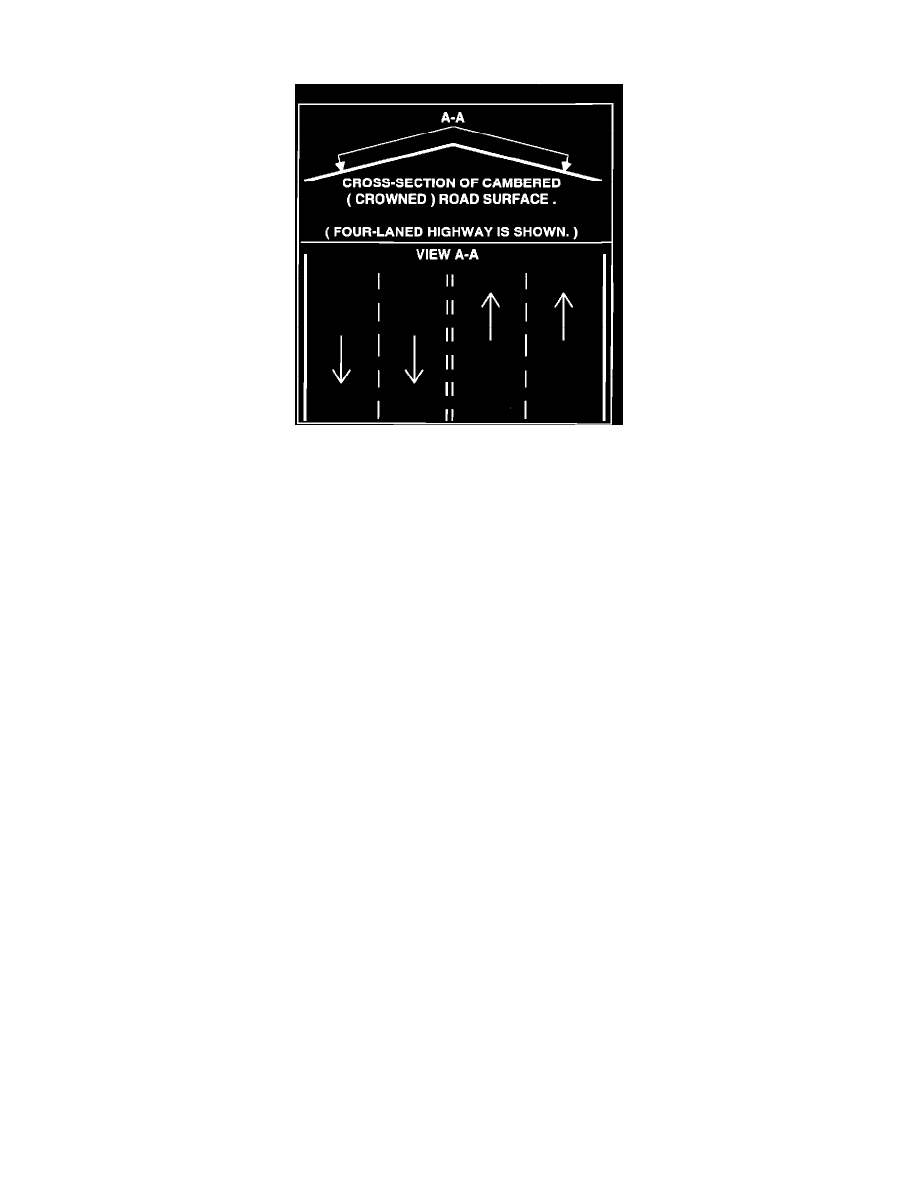Diamante V6-2972cc 3.0L SOHC (1992)

Steering drift (the tendency of the vehicle to drift to the left or right while driving in a straight-ahead direction) can be caused by several conditions. In
most cases, the vehicle(s) returned to your dealership for correction of steering drift will display one or more of the following conditions.
-
Cambered Road Surfaces
For proper water run-off, most highways are built with a cambered or "crowned" surface. Sometimes the road camber is visually noticeable. Other times,
it is not. On a cambered road surface, the vehicle may tend to drift to the left or right, depending on which lane the driver is in.
To compensate, the driver must hold the steering wheel slightly to the opposite side of the drift direction. This is known as counter-steer. On most
vehicles (all but the ones with the easiest steering effort), the driver will perceive this as steering drift.
Try it yourself. Drive any passenger vehicle at highway speeds in the far left or far right lane of a cambered road. The vehicle will tend to drift toward
the shoulder of the road unless you exert a slight counter-steer. However, on vehicles equipped with very easy steering effort (usually the large luxury
sedans), the slight counter-steer required to keep the vehicle moving straight ahead will not be noticeable.
-
Cross-Winds
A sometimes overlooked, yet possible cause of steering drift are cross-winds. Does your customer live and/or drive in windy areas? Side winds can cause
steering drift as surely as anything else. Do not rule this out when questioning your customer on the occurrence of steering drift.
-
Tire Pull
Of course, some road surfaces are built flat, without camber. If the vehicle drifts left or right on a flat road, the tires may be the cause. Slight variations in
tire construction can require extra steering effort and may cause steering drift. Most of the vehicles with tire pull can be corrected by using a special tire
rotation sequence. The rotation sequence is explained in the "Corrective Procedures for Steering Drift... section of this bulletin.
-
Tire Inflation Pressures
Tire inflation pressures must be checked before the tires are warmed up.
With only a 2 psi difference between the left and right tires, a steering drift can occur. Be sure to check the tire pressures prior to more extensive
troubleshooting. Tire inflation pressures for the 1992 Diamante are shown in the "Corrective Procedures for Steering Drift" section of this bulletin.
-
Wheel Alignment
Many people feel that improper wheel alignment is a major cause of steering drift. Actually, improper wheel alignment causes very few cases of steering
drift on the 1992 Diamante.
If the vehicle is within specifications, DO NOT attempt to correct steering drift by adding an adjusting kit for the camber/caster, and DO NOT attempt to
change the wheel alignment angles by bending suspension components. (Any alteration to original equipment voids the warranty.) The correct wheel
alignment specifications for the 1992 Diamante are shown in the "Corrective Procedures for Steering Drift" section of this bulletin.
-
Excessive Steering Wheel Effort Perceived By Customer
